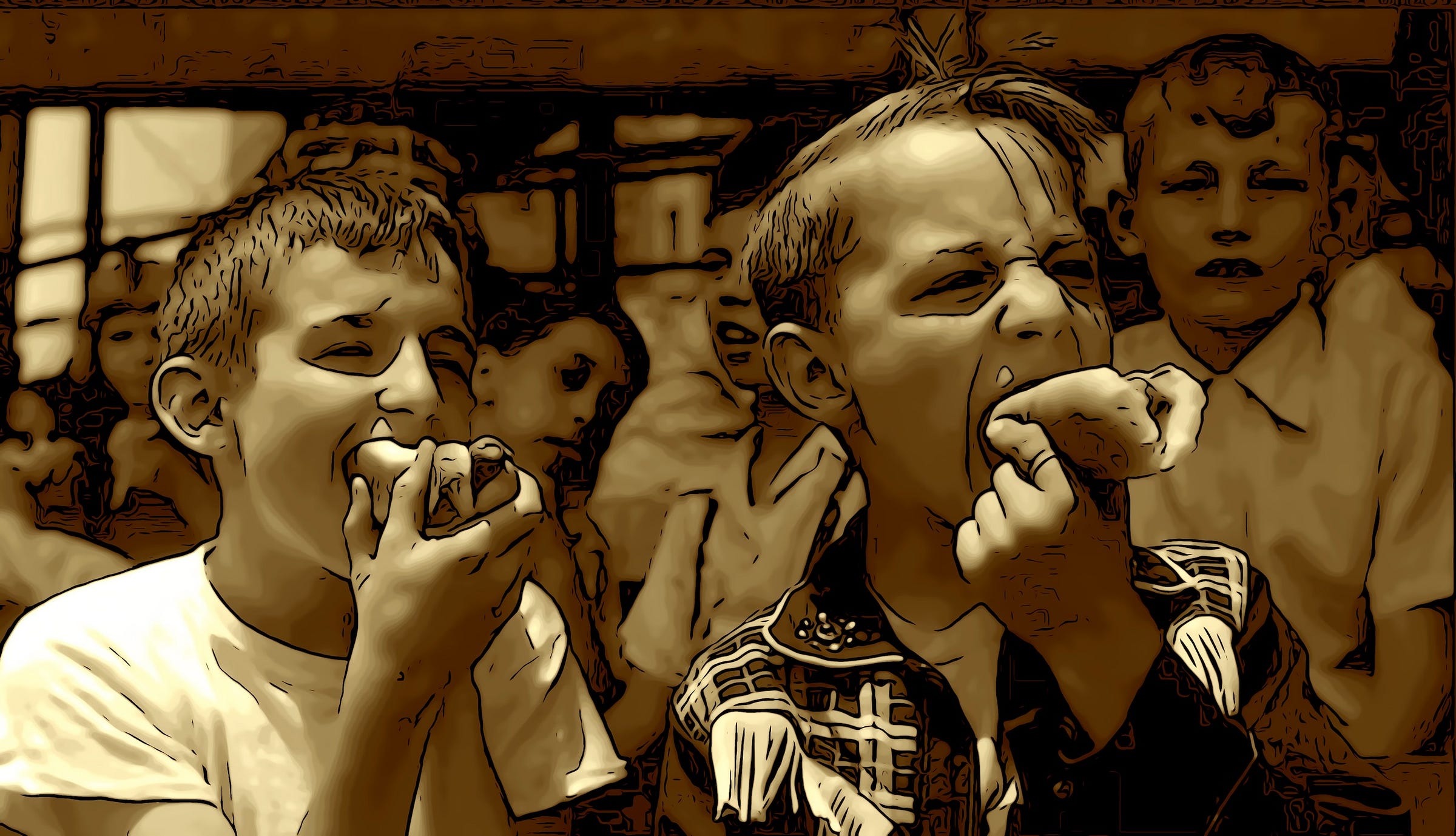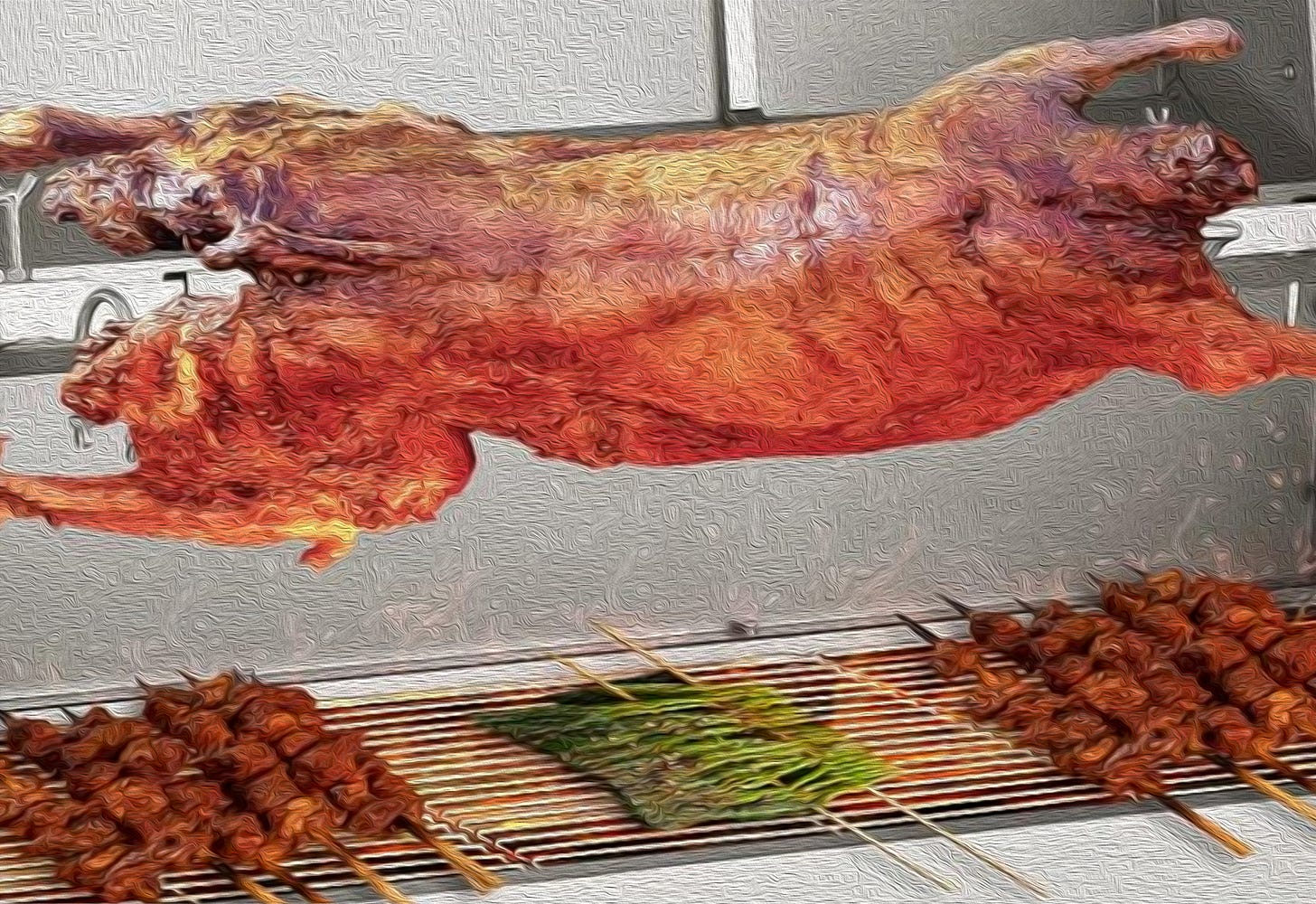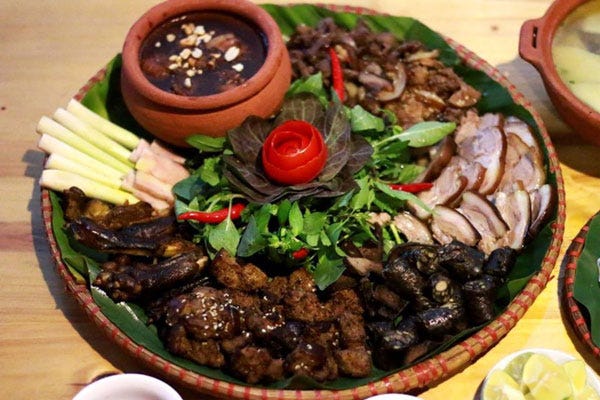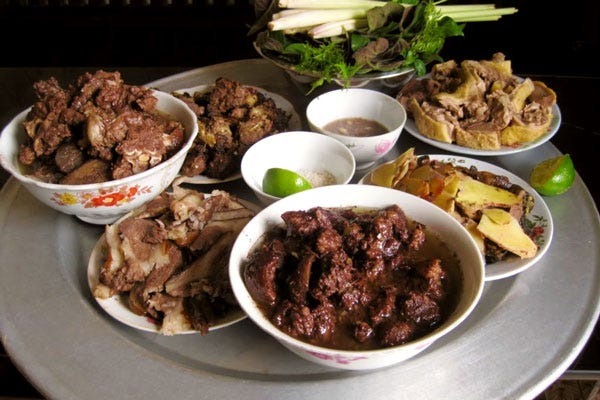Can humans be rewilded?
We need to think about how sustainable our lifestyles are. History tells us we can change.
While researching the evolution of dogs, I came across this paragraph:
It is important to recognize that artificial selection, which has resulted in the production of various breeds of dogs, frequently produces exaggerated physical or behavioral characteristics that would be maladaptive in free-living wild canids. For example, racing breeds such as greyhounds and whippets can outrun most wolves, yet the changes mankind has produced in these animals would render them relatively helpless and vulnerable in the world of the wild wolf.
Such an apt expression of our current predicament with regard to climate change. We are creatures bred to the Anthropocene. Can we survive outside our comfort range?
Human evolution proceeds in fits and starts and we have only recently learned that the epigenome plays as large, or perhaps even a larger, role in our behavior as do the hard-wired genomic changes brought about by mutation and selection.
As individuals, our fitness for purpose is the product of our environment, our microbiome, and a few million years of mutation and selection. It is likely that by now, through the advancement of so-called “modern” civilization—an evolution of purpose—we have bred out some important features that could have aided our success were we forced back to a more primitive set of living arrangements. Hopefully, there are remnant cultures or subcultures that remain fit for rewilding that we can learn from.
At the Maya Mountain Research Farm in Belize our project is reviving a traditional milpa farming practiced for millennia from the Peten highlands of Guatemala to the lowland jungles of the Northern Yucatán. In this region, every few years new discoveries pull back another veil on the civilizations that pre-existed European contact. Many had elaborate architectures of roads, public buildings, and water systems. Some ancient engineering marvels are outside the limited perspective of modernity. There is, for instance, not the constancy we have come to expect. We observe an ebb and flow. Some features, like mounded cities, are well suited for periods of intense rains and flooding. Others, like agroforestry and controlled burns, are best suited to droughts. Civilizations, like seasons, come and go. They rise, and fall, and rise again.
If you sojourn to the Yucatán, outside of Merida, Cancun or Riviera Maya, and forego the bus tours of Chichen Itza or Tulum, you may still be able to experience some traditions that were not lost to the Conquest. The Mexican government recognizes sixty-eight linguistic groups and 364 varieties of indigenous languages. The present indigenous population, meaning those raised with a native language, dress and traditions, is approximately 17 to 20 million in México alone (where you can’t really trust the census). It is likely ten times that across Mesoamerica. The largest language group is Maya, followed by Zapoteco, Mixteco, Otomí, Tzeltal, Tztotzil, Totonaca, Mazateco and Chol.
During their long histories, native cultures experienced many climate extremes. Sometimes those changes divided the eras used by anthropologists such as pre-classic, classic, and post-classic. Sometimes they marked the birth—or the termination point—of an entire civilization. In the Maya world, we know that weather extremes brought the end of some city-states, mass migrations, and reversion to small farmsteads, mostly without significant depopulation. In good times, complex societies grew commercial annual crops and managed large herds to feed their populous cities. In bad times, they lived by reversion to milpa—rotational perennials and patch forest clearing with integrated free-range animals managed for extended families, not export.
Cachorro Pibil
A number of years ago I noticed, along a dirt street near my home in my adopted village, a queue that forms before sunrise and lasts until early afternoon every Sunday. I assumed for a long time that it was charity—a free meal for the poor once a week—but I was wrong. People bring their containers to be filled, pay the cook’s husband and take the food.
At times the line stretches the length of the block, even though the cook, Doña Norma, fills orders at the rate of approximately one per minute. She serves cochinita pibil, and hers is worth waiting an hour in line for.
I decided that I would show up one Sunday at sunrise and get a taste. An adult’s portion is “cinquenta;” meaning 50 pesos (about $3) for half a kilo. Some orders were for “cien,” or “doscien,” one or two kilos, and truthfully, you can feed a whole family with that much meat. With a half kilo of tortillas (50 cents), you can feed 4 or 5 hard-working men for the day.
In the traditional Yucatán style, a small pig is slaughtered, dressed, and marinated in a bath of local herbs—black peppercorn, garlic, cinnamon, clove, cumin, achiote (annatto), oregano and salt. Using stone metate, the herbs are ground into a rub. Bitter oranges and limes are halved and added to some of the rub with water to make a marinade. The pig, quartered, is soaked for 30 minutes, then rubbed with spices, and placed in an iron kettle. A thick layer of subdermal fat covers the meat, which is then buried in diced tomatoes, red onions, and the marinade. The pibil is sealed with banana leaves to hold in the steam before the lid is closed. The wide pans or kettles are then taken to a pit where a fire has burned down to coals and laid in, with coals packed around. The hole is covered with a layer of aromatic leaves called in Maya “sacmis.” After hours of baking, sometimes a full night, the pibil is unburied and taken to the market.
Given that México has 20 million dogs, each of whom will emit three-quarters of a ton of greenhouse gases per year, and México has pledged to reduce emissions 35% by 2030, one must ask, does México plan to phase out 7 million dogs in 6 years? If so, how?
The Ascent of Pig
As I try to wrap my head around the climate impacts of dogs, I wonder what it is that allows some people to eat them while others find that practice barbaric. The dog meat trade is most widespread in China, South Korea, the Philippines, Thailand, Laos, Vietnam, Cambodia, Indonesia and northern India. Those are not young cultures. Dog is a red meat, quite fatty, a cross between beef and mutton but more robust. Nureongi, commonly referred to as “meat dogs,” are the breed most often raised for this in Korea. A city like Los Angeles will consume 30 million pounds of hot dogs (made from beef or pork) in a year, but suggest they try ballpark dog meat dogs and the average Angels or Dodgers fan might puke.
It was similar for pigs in the Yucatán at one time. Pigs are not indigenous to the Western Hemisphere, although wild peccaries called javelinas are. The Mexican hairless pig was bred in Cuba after its forerunners were brought over on Columbus's second voyage. Hernán Cortés launched the first pig farm in Yucatán in 1521, but it was for Spaniards, not natives. Mostly vegetarian, 16th-century indigenos rejected pork as tainted conqueror fare, rightly attributing some of the diseases that ravaged and decimated their kind to Cortes’s swine herds. While they didn’t keep hogs as household pets, they were revolted by the idea of eating them.
Give it a few centuries, though, and Mexicans learned to use the lard for tamales and to make chicharrones with skin that still has fat and, occasionally, meat attached. Chuletas de cordero, jamón casero, costillas tamarindo, cerdo agridulce—México developed a world heritage cuisine so dependent on pork that it became the third largest pork importer in the world, after China and Japan.
A half-hour before sunrise, I watched as four stout policemen unloaded two full kettles, each weighing around 500 pounds, from the back of their black and white CanAm ATV. The family had brought their pibil from the farm to the market with the help of our local constabulary.
Pibil comes from the Mayan word Pib, which means ‘cooking underground’, where the meat cooks slowly until tender. Cochinita means little piggy. A Cachorro is a puppy.
Just like eating a dog, many people will take issue with killing and eating a pig. It is an animal of similar intelligence to a dog, or to a horse or chimpanzee (all of whom have discrete intelligences, and comparisons with human intelligence are dicey). But the fact is, we all kill to eat. Even vegans kill by the billions with every forkful of salad, and some of those microscopic animals have eyes, feel pain and will try to get away if they can. At least with the cochinita pibil in typical Maya style we know the pig was free range its entire life, was part of a forest ecosystem, ate the abundant leftovers from bananas, mango, avocado, breadnut and other trees, and was a family pet that had other piglets and Mayan children to play with. It had a good, if less than long, life.
We all need to think about how sustainable our lifestyles are. There are good examples and poor ones. The worst of us impart vast amounts of greenhouse gases to the atmosphere, plastics into the ocean, and long-lived poisons like radionuclides and pesticides into the environment with abandon—far out of proportion to our importance or position in Earth’s ecosystem. Like most everything else, we will eventually become food for worms. The best of us think multigenerationally and manage our footprint to become nearly invisible.
Many societies that ancient peoples formed in history may not be remembered now. Uncounted great stone monuments and megacities have been reclaimed by jungles and desert sands. Many civilizations did not wage wars or build slave empires, although a few did. Most tended tree crops, hybridized fruits and nuts, and kept animals like these pigs to become pibil. Or dogs, for the same reason but different seasoning.
And because one cochinita pibil is too much food for one family, whenever they made it, they created community.
With community, we have the capacity to change. We can change how we dress, what we eat, what kind of houses we live in, what we do for work. All those kinds of changes are coming and they will be quick. Having strong community bonds makes the transition easier and more fun.
Try as we may to breed out the community-building skill by porting ourselves to the metaverse, it is unlikely that skill will become culturally extinct. It retains value by ritual and renewal, even if it means standing in a long queue at sunrise on a Sunday morning.
References
Arnold, Jeanne E., and Anabel Ford. "A statistical examination of settlement patterns at Tikal, Guatemala." American Antiquity 45.4 (1980): 713-726.
Bada, Xóchitl, and Jonathan Fox. "Persistent rurality in Mexico and ‘the right to stay home’." The Journal of Peasant Studies 49.1 (2022): 29-53.
Campbell, David G., et al. "The feral forests of the eastern Petén." Time and complexity in historical ecology: Studies in the Neotropical lowlands. Columbia University Press, 2006. 21-56.
Cruz, Saúl Velasco. El movimiento indígena y la autonomía en México. Vol. 23. Unam, 2003.
Fedick, Scott L., and Anabel Ford. "The prehistoric agricultural landscape of the central Maya lowlands: an examination of local variability in a regional context." World Archaeology (1990): 18-33.
Ford, Anabel, and Ronald Nigh. The Maya forest garden: Eight millennia of sustainable cultivation of the tropical woodlands. Vol. 6. Routledge, 2016.
Ford, Anabel, and Ronald Nigh. "Origins of the Maya forest garden: Maya resource management." Journal of Ethnobiology 29.2 (2009): 213-236.
Fox, J, Mexico’s Indigenous Population, Cultural Survival, Indigenous Rights and Self-Determination in Mexico March 26, 2010. https://www.culturalsurvival.org/publications/cultural-survival-quarterly/mexicos-indigenous-population
Lockwood, Randall. "Ethology, ecology and epidemiology of canine aggression." The Domestic Dog: Its Evolution, Behaviour & Interactions with People, (2016): 160-181.
Thompson, Amy E., et al. "Ancient Lowland Maya neighborhoods: Average Nearest Neighbor analysis and kernel density models, environments, and urban scale." PloS one 17.11 (2022): e0275916.
Meanwhile, let’s end these wars. We support peace in the West Bank and Gaza and the efforts by the Center for Constitutional Rights, National Lawyers Guild, Government of South Africa and others to bring an immediate cessation to the war. Global Village Institute has sponsored the Green Kibbutz network and the Marda Permaculture Farm in the West Bank for over 30 years and will continue to do so. We also aid Ukrainian children seeking refuge in ecovillages and permaculture farms along the Green Road. You can donate by going to http://PayPal.me/greenroad2022 or by sending donations to us at greenroad@thefarm.org. There is more information on the Global Village Institute website (GVIx.org). Thank you for your help.
All Patreon donations and Blogger, Medium, or Substack subscriptions are needed and welcomed. You are how we make this happen. Your contributions are being made to Global Village Institute, a tax-deductible 501(c)(3) charity.
My latest book, Retropopulationism: Clawing Back a Stable Planet from Eight Billion and Change, is now available. Complimentary copies should reach Power Up! Patreon donors soon.
And thanks once more to everyone for your support of the Global Village Institute. Please feel free to share this post or any part of it.









